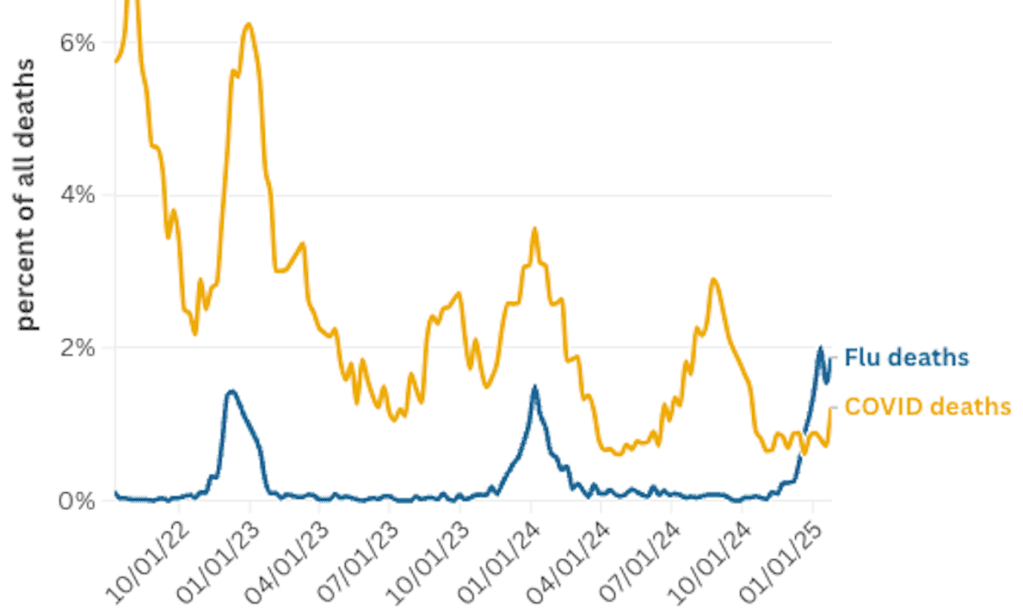
This winter, California is experiencing a notable shift, as influenza is causing more fatalities than COVID-19 for the first time since the onset of the pandemic in 2020. Throughout this period, COVID-19 has consistently been the leading cause of respiratory illness deaths in the state, although annual mortality rates have shown a decline over the years. In the pre-pandemic era, influenza was recognized as a significant seasonal threat.
“Before the arrival of COVID-19, influenza was the predominant epidemic infectious disease in the developed world, markedly impacting yearly mortality rates,” remarked Dr. John Swartzberg, a clinical professor emeritus at the UC Berkeley School of Public Health.
However, recent data from the California Department of Public Health indicates that as of late December, the proportion of deaths attributed to the flu has outpaced those related to COVID-19.
In the initial years of the pandemic, stringent health measures significantly dampened typical flu outbreaks, which normally result in 10,000 to 50,000 deaths each year in the United States. Protocols like social distancing, mask-wearing, and limiting indoor gatherings effectively curtailed the spread of both COVID-19 and the flu.
As COVID-19 vaccines became widely available and the virus’s severity waned, many individuals relaxed their precautions, allowing the flu to make a comeback. This year, however, the rise in flu-related deaths has been alarming, with flu accounting for about 2% of total deaths statewide during early January—an increase from just below 1.5% in the previous two winters.
Since July 1, California has reported at least 561 deaths due to influenza, with the majority occurring in individuals aged 65 and older.
Dr. Swartzberg warns, “This could turn out to be the most severe influenza season we’ve seen in the 21st century,” highlighting that current testing shows nearly equal cases of H1N1 (swine flu) and H3N2, both subtypes of influenza A. He noted that Influenza B symptoms generally emerge later in the season.
Importantly, he stated there’s no evidence linking this unusual flu surge to the bird flu, which has been making headlines due to its spread among various species, including birds and livestock.
Unlike recent winters, COVID-19 has not seen a resurgence this season after a late summer spike. Since the end of June, at least ten pediatric deaths related to influenza have occurred in California, contrasting with just three pediatric fatalities linked to COVID-19 during the same timeframe.
Dr. Swartzberg points out that one contributor to the elevated flu rates this year is the decreased vaccination coverage post-pandemic, particularly among children. According to the CDC, only 45% of children aged 6 months to 17 years were vaccinated against influenza by the end of January 2025, a drop from 58% in January 2020.
For those looking to stay healthy, Swartzberg recommends returning to the health protocols employed during the pandemic, including wearing masks indoors. Additionally, it’s not too late to get a flu vaccine if you haven’t already this year.
California is not alone in confronting a rise in influenza cases, with school closures reported in over ten states due to high transmission levels. Nationally, the CDC has recorded 57 pediatric deaths from the flu this season.
As of the last week of January, only slightly over 1% of death certificates in California cited COVID-19, which is the lowest rate since the early days of the pandemic, remaining stable between 0.6% and 0.8% since October.
Originally Published:









